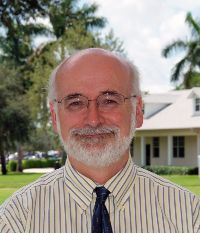
NBOA President and CEO
I am pleased to share this space with Philip Cork, my good friend and colleague as well as a national thought leader. Philip is associate headmaster for finance and assistant treasurer at Saint Andrew’s School in Florida, and he has been an active member of NBOA for years. His many contributions to the national association include serving as a faculty member of the NBOA Business Officer Institute and as a speaker at the NBOA Annual Meeting. He currently serves as a member of the Net Assets Advisory Committee.

Follow NBOA President and CEO Jeff Shields @shieldsNBOA.
Article by Philip Cork, Saint Andrew’s School

Philip Cork
Saint Andrew’s School
Associate Headmaster for Finance and Assistant Treasurer
In these busy summer months, preparing for the new school year includes the essential task of scheduling classes. It is always challenging to balance demand for the classes that students need or want with the supply of teachers and learning spaces available. Invariably, a significant constraint is the traditional “faculty-owned classroom.” Take a walk around your campus when school is in session, and you’ll likely see a number of classrooms that are either empty or occupied by only a teacher grading papers or prepping for classes. This prompts some critical questions:
- How efficient are we at using our existing space?
- If we were more efficient, could we provide our program in less space?
- What other benefits could we derive with a new model?
Addressing these questions became real for us at Saint Andrew’s School in 2015, as part of our master site plan process. An important focus of this plan was the Upper School. In 2014, a separate study — based on the faculty-owned classroom model — had indicated the need for nine additional classrooms in the Upper School, which serves 600 students. That would have increased the Upper School’s total non-science classrooms to 54 from 45, requiring significant new construction.
In my opinion, the faculty-owned model has two important negatives:
- Desks, files, bookshelves and other furniture accumulated by teachers over the years reduces the amount of space available to students
- Only the faculty who “own” the classrooms use them.
Using a color-coded matrix to characterize the use of classroom spaces over the Upper School’s six curriculum blocks, we found that most classrooms were poorly matched both in size and proportion to the class sizes using them. We also found a majority to be lying fallow for long periods through the day.
At the suggestion of our architects, Centerbrook, we decided to test how efficiently those existing 45 classrooms might be used if teachers didn’t “own” the rooms. To do this, we estimated the numbers of students that each room could accommodate after removing teachers’ furniture and making minor reconfigurations.
Between the 2014 study and our 2015 Master Plan, this amounted to a swing of 21 classrooms, an enormous amount of academic space representing significant savings for the school.
Working with the Upper School’s registrar, Centerbrook made a straw man assignment of classes to rooms across the curriculum blocks for the duration of a single semester. This exercise revealed that instead of having to build nine new teacher-owned classrooms, the Upper School could reduce its classroom number by 12. Between the 2014 study and our 2015 Master Plan, this amounted to a swing of 21 classrooms, an enormous amount of academic space representing significant savings for the school.
To move forward with this change, Saint Andrew’s needs buy-in by faculty. We’re working on that now, and expect great progress when they become involved in the design process and visit other schools that have made similar changes.

To provide faculty with useful space in which to work, we plan to convert the “found” square footage from the existing 12 classrooms and associated corridors into a single, large, attractive faculty co-working space. Features will include open-plan workstations, closed offices for department heads and a variety of shared private meeting rooms, lounges, copy equipment space and a kitchenette. Workstations will often be grouped by department, but lounges will occupy the spaces between to foster cross-discipline conversations. Inspiration for these types of co-working spaces can be found at many schools, and Centerbrook showed us its designs for successful faculty co-working arrangements at University School in Cleveland and Mary Institute Country Day School in St Louis.
I believe the strategy of shared classrooms and faculty co-working spaces, especially in upper schools, will yield numerous benefits. It will increase faculty cohesion and encourage collaboration across disciplines, and that should result in curriculum enhancements. It will mean more consistently positive student exposure to well-equipped, well-sized classrooms. But most importantly to me as a business officer, this master plan approach will allow Saint Andrew’s School to engage in only light renovations of its existing academic spaces rather than having to embark on a large program of demolition and new construction.
Given the potential benefits, this change is one that deserves careful consideration in your future facilities planning as well.
Philip Cork is associate headmaster for finance and assistant treasurer at Saint Andrew’s School, a day and boarding school with 1,280 students in Boca Raton, Florida.
From Net Assets NOW, July 11, 2017. Read past issues of CEO Notebook.


